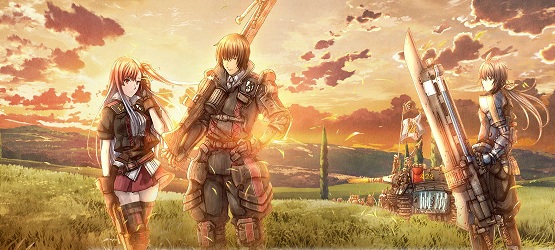Fans of either of the first two Valkyria Chronicles games are bound to enjoy Valkyria Chronicles 3, as it once again delivers that fantastic Valkyria battle system that made the others so memorable. While it can’t compete with the original’s epic scale due to hardware constraints, VC3 does match or exceed the second title in virtually every way. Those who have never played any Valkyria game would do best to begin with the PS3 original, but Valkyria 3 isn’t a bad starting point either.
The main attraction to Valkyria Chronicles 3 is the same thing it’s been in all Valkyria games: the battle system. The first game put a genre-changing spin on tactical RPGs, and the sequels thankfully haven’t looked back. It’s fun, it’s addictive, and just like before, it’s easy to sink in a lot of hours without regretting a moment. This is partially thanks to the quality of Sega’s concept, but also thanks to new twists that continue to keep things fresh.
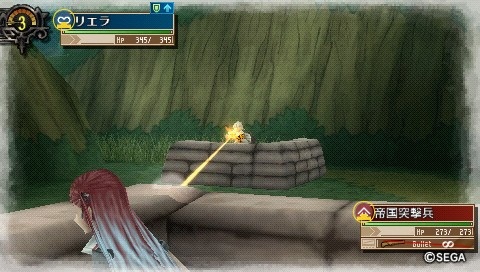
While the first game used a story book as its base of navigation, and the second went with an overhead view of a military school campus, the third now goes with maps of battlefields. Each chapter begins with a section of a map, upon which a home base, battle locations, and story points are marked. Things must move in chronological order though, so not all cutscenes or battles will be immediately available. At the end of a chapter, players are presented with a new map featuring a different part of the war zone, but at any time between segments, one can turn back to previous maps and replay its skirmish or story scenes.
Players will often be given options as to what course of action they’d prefer en route to the story goal — something completely new to the series. In the first two games, the story battles happened at set times and places, and that was that. One could replay skirmishes, and in the epilogue could redo story battles, but never were there two clearly different paths before the player. For example, sometimes there will be options like “Cut the enemy off and fight head on, in the woods” appearing on the map as A, whereas battle B is “Go around the hills and meet them in town” or some similar scenario. The player can look over the terrain, enemies, items up for grabs and winning conditions before choosing, but only one path can be picked. (After clearing either battle A or battle B, the unpicked fight will become unavailable, because doing both would be nonsensical Back to the Future fodder.) This is a welcome touch of non-linearity for a series that hasn’t had much of it.
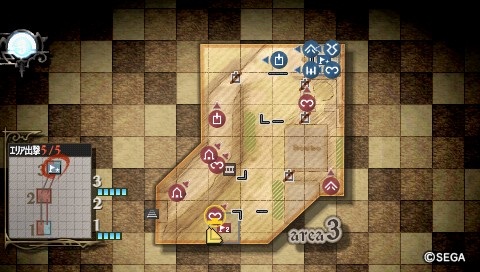
Soldier progression in Valkyria Chronicles 3 is the best it’s been in the series. As players may recall, the first game had players using EXP to give all-encompassing level-ups to all members of any given class, which worked well enough. The second featured a deeper class system and enables class changes and upgrades among individual members, in addition to the first game’s EXP system. The problem with the second game’s system was that changing classes required spending “badges,” which were earned almost completely at random among battle participants. This somewhat broken system led to a frustrating amount of badge grinding. In Valkyria 3, however, class changes can be done by any character at any time. Want to make Kurt a sniper? You can, right away, without having to spend any points. Didn’t like how that worked out? Then change him back to a shocktrooper, or try something else. No sweat. This isn’t simply making the game “easier,” but more streamlined; it fixes a broken system. It also improves the game as a whole, thanks to the amount of strategy in the class changes.
Once again unlike Valkyria Chronicles 2, there is reliability and predictability in the growth system, which was sorely missed. A character who gained a few levels as one job before becoming another will usually keep better stats in the transition — and you know this. Characters gain these class level-ups by participating in battles — and you know this. If a character is deployed and takes action, that person will get the class experience at the end of a battle, so long as he/she wasn’t captured — and you know this. It’s so relieving to actually be able to reasonably know what to expect in terms of experience and character growth.
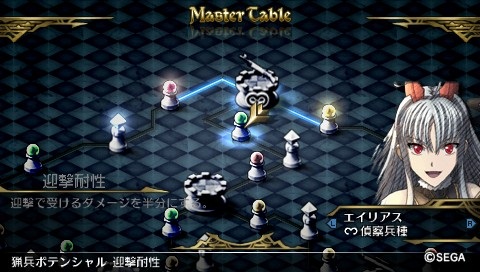
Beyond that, the old EXP system is also in place, but this time around, EXP is not applied to one class at a time, it’s applied to one attribute at a time. Whereas before, the player would spend, say, 9,000 EXP to upgrade all aspects of every scout in the group, the player now takes EXP and puts it towards HP, accuracy/defensive firing, agility/dodging, power of co-operative attacks, or learning new Orders. So the player fights a battle, gets a bunch of EXP, then clicks the base camp, let’s say. One can then choose which aspect to upgrade; if HP is chosen, then every group member’s HP will increase by two or three points, regardless of class or level within that class. The way everything works out is great. Strategic, yet user-friendly, it’s the best character growth system the series has seen so far. Other additions like an increased weapon variety and the character-developing Master Table solidify this third entry as the series’ best in terms of team customization.
Valkyria 3 continues to make things exciting with the way it handles character KO’s. Rather than just having a teammate recover a body and send it back to camp like before, the Support class members can now revive a fallen comrade from a distance with an item. When this is done, that fighter stands back up and is ready to go in the very spot he/she was gunned down, just not with full HP. The stakes are somewhat lowered with the lack of a hospital or permadeath, but VC3 makes up for this by giving the player a shorter time to revive a fallen ally. That’s the type of change a good sequel should make: take out one kind of challenge and insert another. They both work, and using different systems serves to spice things up in a series.
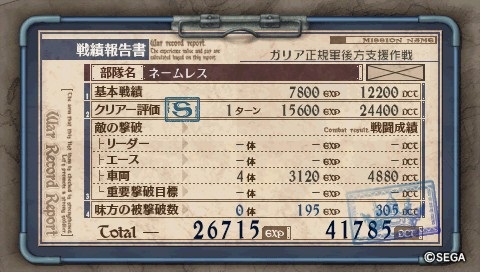
While surpassing its elder in the quality of its story and characters, it does still carry over many of its design quirks that made the second entry a bit less fun than the original. Since the second and third Valkyria games were built for PSP hardware instead of the vastly more powerful PS3, the battlefields had to be smaller and the number of possible units on them had to be given a somewhat low cap. This means, just like in VC2, battles in the VC3 will take place with a few small maps rather than one huge one. Transportation between the areas, and even within parts of the same mini-map, will be done with that certain magical teleportation that the second game introduced. Need a sniper to move from one corner of the map to the other? Well then, you’ll retire him from your base in the bottom left corner, and summon him anew in the top right, and he’ll pop out of there with his full movement bar and everything. You’ll do this because it’s strategically sound — using fewer command points and increasing safety — yet the logic of it does not fit the game’s universe. These regular soldiers are blazing across a battlefield faster than a valkyria, and yet it’s almost ignored. It’s weird.
The battlefields are, about half the time, recycled from Valkyria Chronicles 2, which comes as something of a disappointment. New battlefields become more frequent later on, but the game spends dozens of hours sending players to the same places they already saw 100 times before. I would welcome this if it were a limited number of times, but this copy/paste job makes itself seen quite a bit. You’ll also notice recycled music.
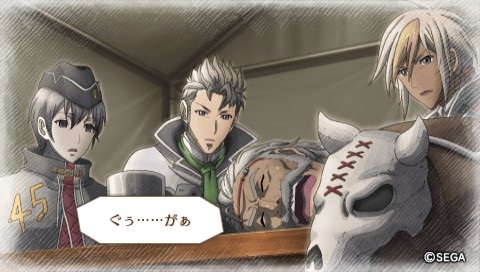
Handheld Gallian warriors will command a squad called “The Nameless,” or more officially, Gallian Military Squad 442. Members of this group have their names blotted out from Gallia’s official history and are referred to as numbers instead; this is where the game gets its subtitle, “The Unrecorded Chronicles.” Becoming a member of The Nameless involves pissing off the military higher ups or otherwise being a disgrace. Its members have done things like botch assignments, disobey orders, cause drunken rackets, and so on. Kurt Irving is put in command of these military misfits after a finding himself accused of treason. Where exactly the logic of putting treason suspects in charge of army squads comes in, I’m not sure, but I guess the game had to roll on somehow. Being outcasts and punished soldiers, they’re generally given tough assignments.
The story is a lot more serious in its tone than the last Valkyria game. It takes place at the same time as the original Valkyria Chronicles, and much like that game, it’s a war story, whereas the second was more of a coming-of-age story happening at a time of war. Many characters have their shticks and such, but they demonstrate functional chemistry.
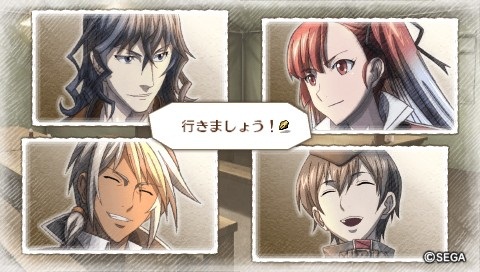
Said story is told using animated character portraits in a fashion similar to Valkyria Chronicles 2, but they often appear like pages of a comic book, which is nice for variety’s sake. There are more than a few cheesy moments, in which the script writers felt it necessary for every single character to get a word in before the next fight. It’ll be like…
Character 1: So let’s go get ’em!
Character 2: Yeah!
Character 3: We’ll win because we have each other!
Character 4: We can’t lose!
Character 5: That’s because we’ll win!
Character 6: Among the things I plan to do, priority #1 is winning!
Character 7: Really? I would also like to do that today. May I join you?
Character 8: Always room for one more on the Win Train! Toot toot!
Muse: Together we’re invincible!
The Beatles: All you need is love!
Queen: Another one bites the dust!
Bon Jovi: Whooaa, livin’ on a praya! Take my hand, and we’ll make it I sweaya!
And so on. These scenes are surprisingly frequent and demonstrate that while the story itself is interesting, the script definitely isn’t really anything special. It’s almost as if there was a struggle to make the characters noteworthy, and the writers thought that in terms of dialogue, quality came a distant second to quantity. Oh well. I can talk about it for a long time because that’s what I do, but it’s not terribly distracting and doesn’t do serious damage to the overall great experience.
With the game taking place alongside the original, players can look forward to expanding their knowledge and understanding of the Valkyria Chronicles universe and even a few cameos here and there. Similar to the second game, players can again use save data from certain other Sega games and special codes to unlock new characters, some of whom are from other Valkyria games, and one of whom should become a critical member of the squad.

The exciting battles, interesting growth system, great visuals, and entertaining characters make Valkyria Chronicles 3 a fantastic handheld strategy RPG. Fighting battles and upgrading with these systems doesn’t get tired. Some players might be able to run through it in 50 hours, some might take triple that long. Its battlefields are a bit small, and the recycled assets might annoy some veterans of the second game, but these are minor quibbles standing against an overall great package. It’s a damn shame this never came out in English.
(Post-review notes for importers. Read the PSLS guide to importing here.)
There are a lot of English bits on the menus, and thanks to icons and such, you should be able to figure out the general idea of what’s going on in most menu screens of VC3. Story scenes are about a 50-50 split on spoken dialogue with readable text, versus all text. There’s not a lot of furigana over the kanji, so if you want to know every detail of what’s being said at all times, you’ll need to have a very good kanji reading level. If you’re like a lot of second-language Japanese learners and your listening skills are better than your reading skills, then at least the most important scenes will be understandable to you. Reading things like facial expressions, tone, and body language tends to help as well, as the manga style tends to make the character images very expressive.
The real problem, if your Japanese level is low, might be misunderstanding your mission objectives, which would lead you down a road of trial and error and possibly a few failed missions, just because you didn’t understand what you were supposed to do. If this is acceptable to you, and you love Valkyria, it still might be worth an import.
I’ve read that the PSP homebrew scene is going to soon see some kind of English patch for this game. I unfortunately can’t make a recommendation one way or another because I have no flippin’ idea how that all works. I’ve never needed an English patch for my games, so I’ve never explored how I install those or what is involved. Sorry. If you know about the patch and have good faith that it will be released, will be of good quality, and will work, then you might consider importing a copy of this game right now, while it’s a little bit cheaper. The release of the patch might also lead to an increase in demand for the game, and then a subsequent price hike in places like eBay and Play-Asia. This game is compatible with PS Vita, though switching regions on Vita is a pain, so consider that before you buy digital.
-
That Valkyria battle system
-
Good visuals; everything looks very impressive
-
Best character growth system in the series
-
Enjoyable characters in a good story
-
A lot of longevity
-
A lot of fights take place on recycled battlefields
-
Hang on while I teleport around the enemy....
-
Would have been nice to see enemy A.I. sharpen up a bit
